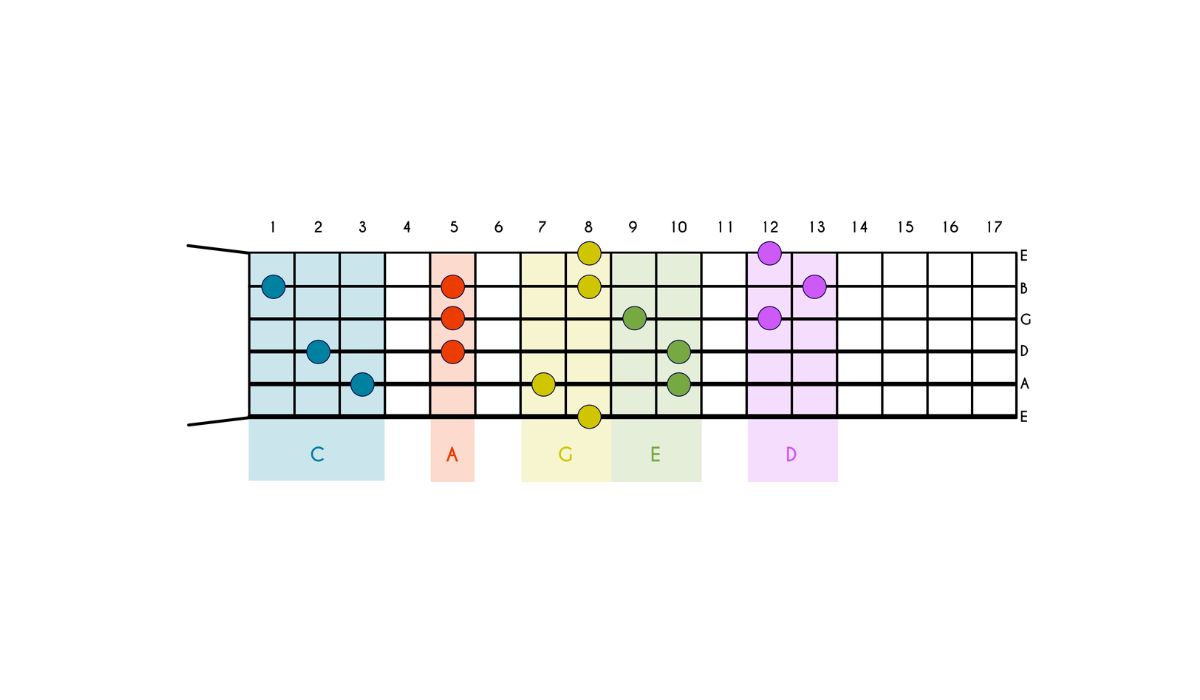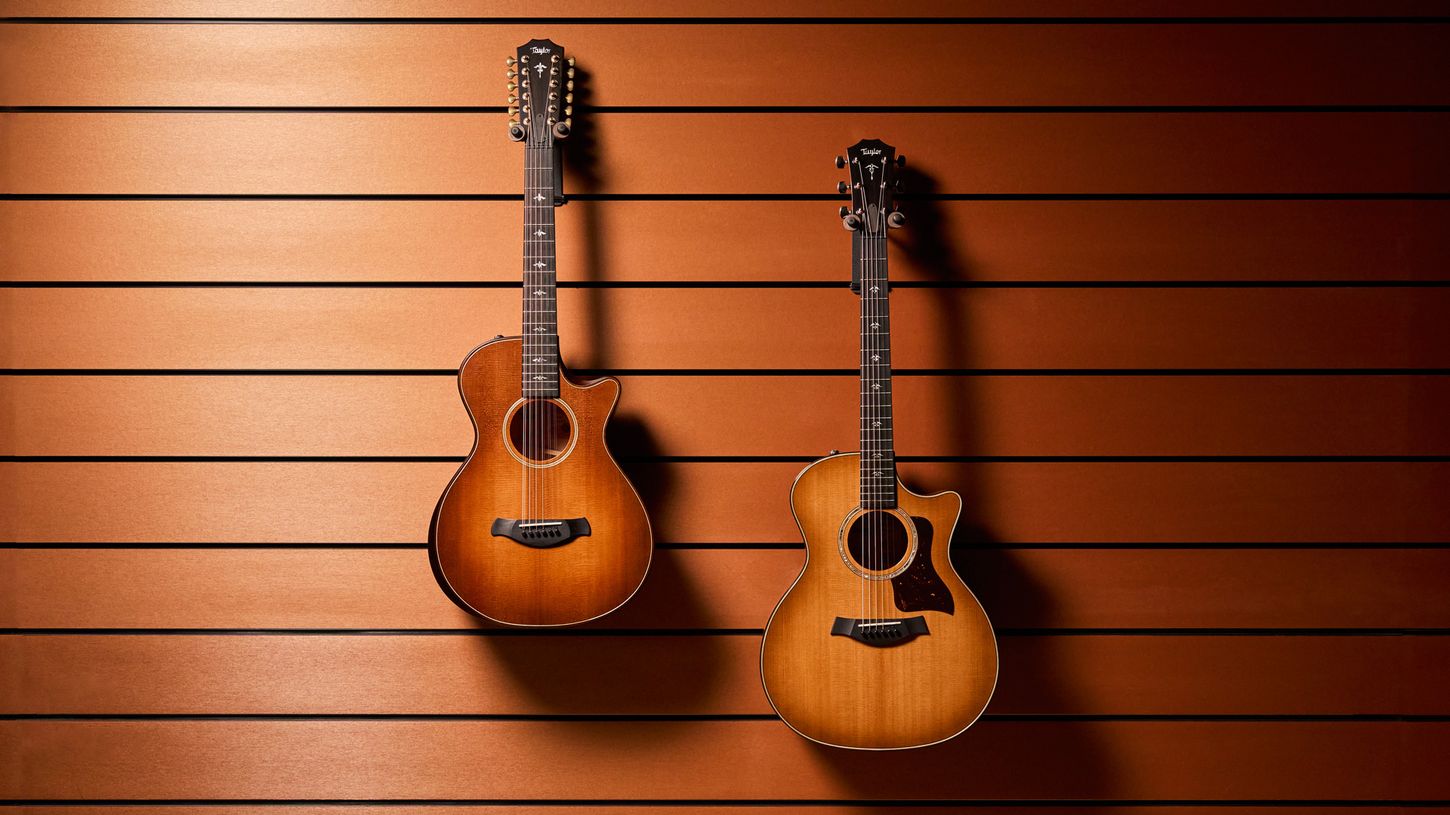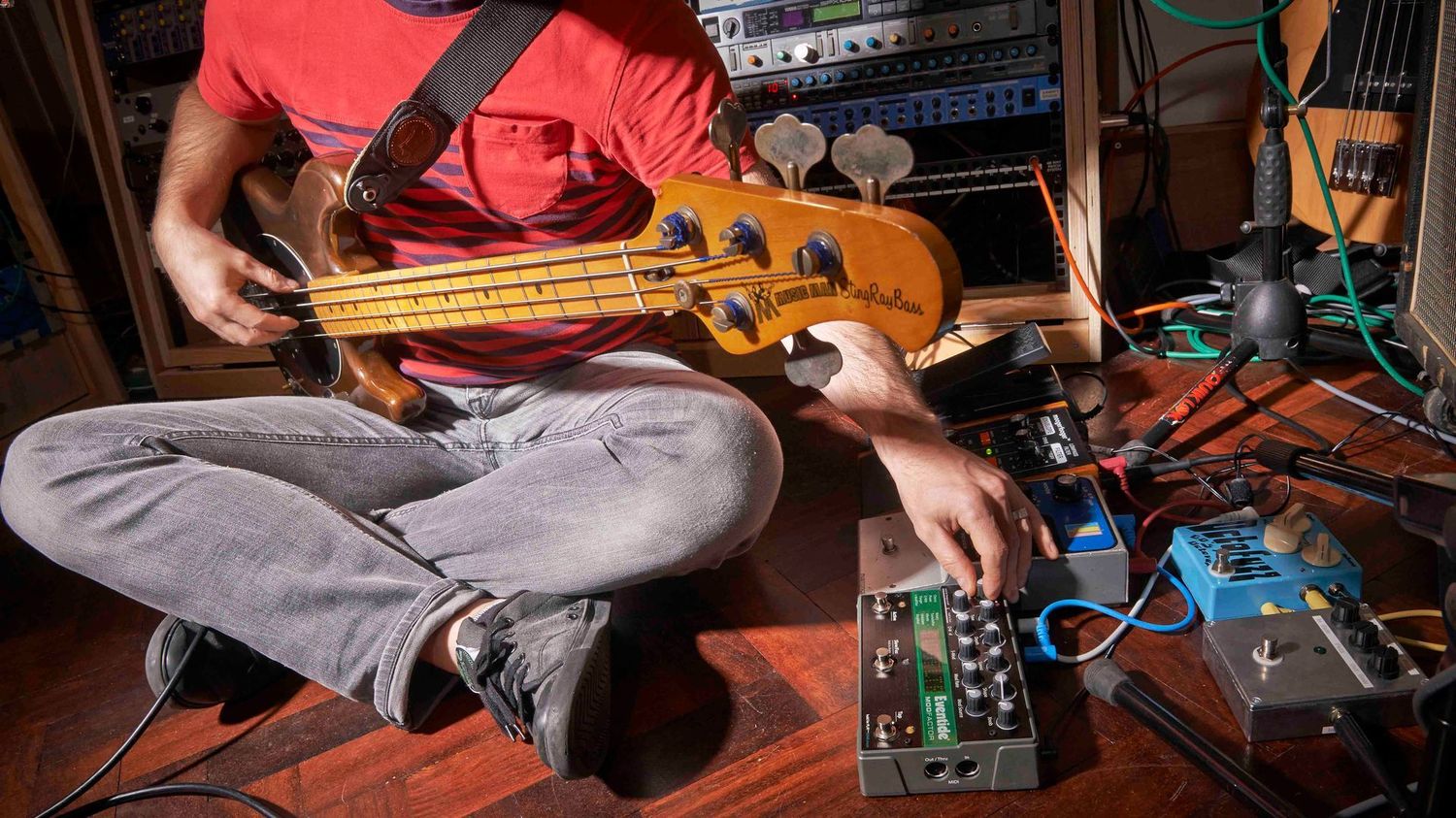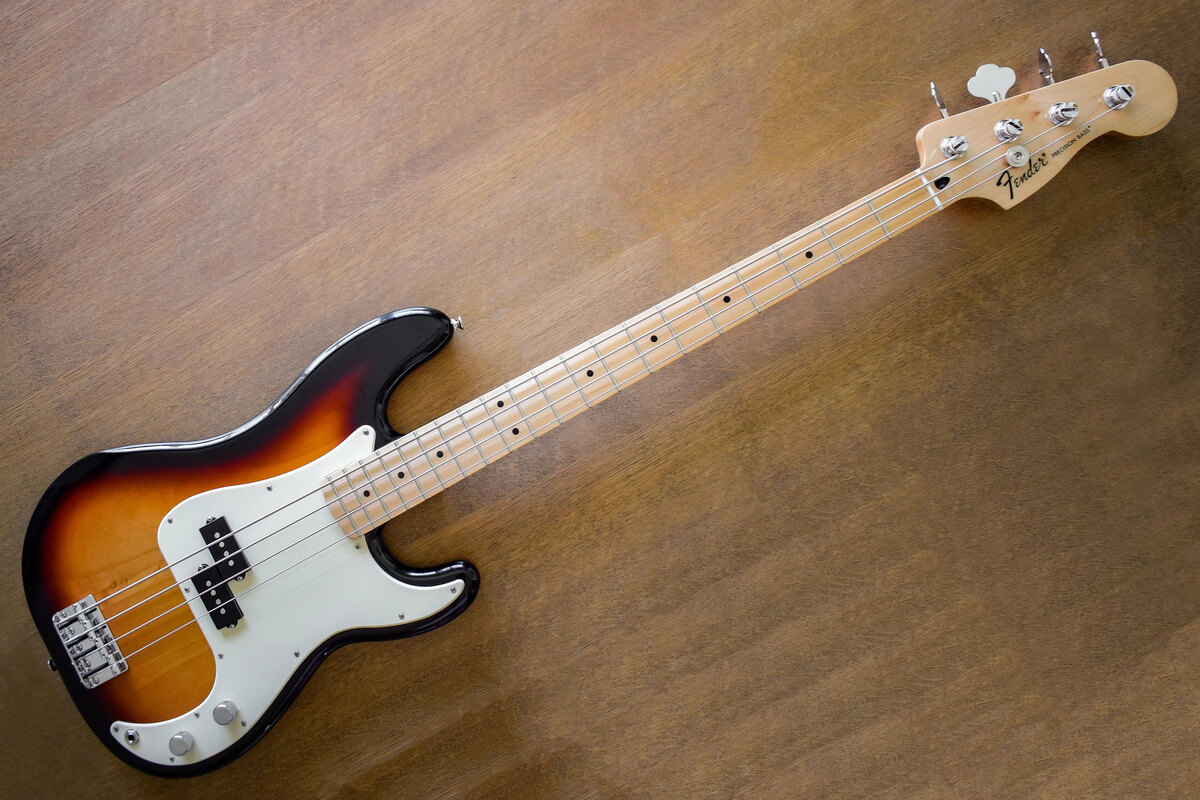Home>Instruments>Bass>How Many Frets On A Bass Guitar
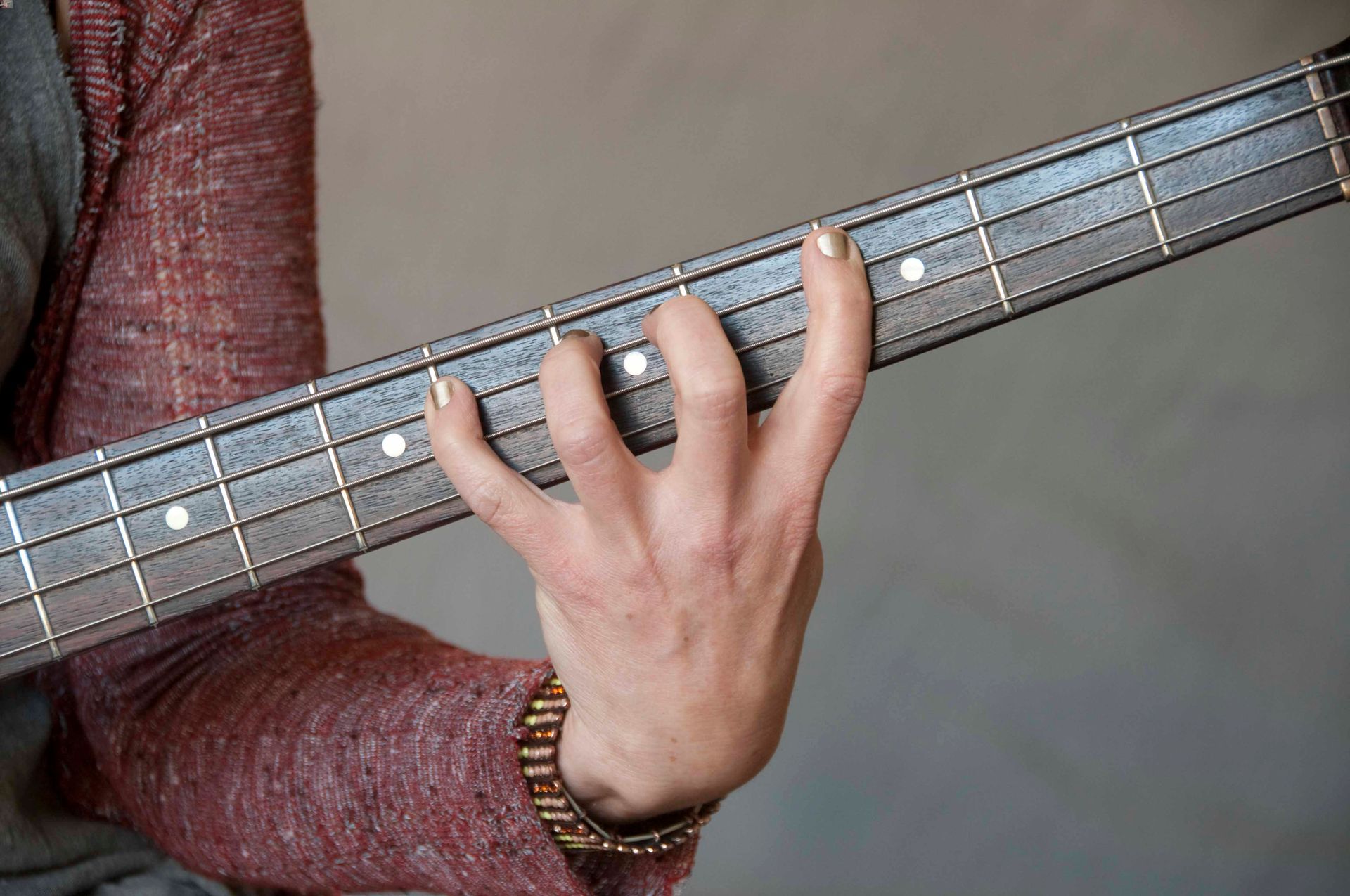

Bass
How Many Frets On A Bass Guitar
Modified: January 22, 2024
Discover the answer to "how many frets on a bass guitar" and explore the world of bass with our comprehensive guide. Learn everything you need to know about bass guitars and unleash your inner bassist.
(Many of the links in this article redirect to a specific reviewed product. Your purchase of these products through affiliate links helps to generate commission for AudioLover.com, at no extra cost. Learn more)
Table of Contents
Introduction
When it comes to the world of musical instruments, the bass guitar holds a special place. As the backbone of the rhythm section, the bass guitar provides the low-end foundation that holds a band together. Whether you’re a seasoned musician or just starting out, understanding the fundamentals of a bass guitar is essential.
In this article, we will explore one vital aspect of a bass guitar: the frets. Frets play a crucial role in determining the pitch of the notes produced on the instrument. We will delve into the world of frets on a bass guitar, discussing their purpose, the different types of bass guitars, and the standard number of frets you’ll find on most bass guitars.
Whether you’re a beginner hoping to purchase your first bass guitar or a seasoned player looking to expand your knowledge, this article will provide valuable insights and guidance.
So, let’s dive in and explore the fascinating world of bass guitar frets!
What is a Bass Guitar?
A bass guitar is a stringed musical instrument that is played by plucking or strumming the strings with the fingers or using a pick. It is similar in appearance to an electric guitar but has a longer neck and thicker strings. The bass guitar is designed to produce lower-pitched sounds, providing the rhythmic foundation for a band or musical ensemble.
The role of a bass guitar in a band is multifaceted. It is responsible for creating a solid rhythmic framework by playing the root notes of chords and providing a steady pulse for the other musicians to follow. The bass guitar also adds depth and richness to the overall sound, enhancing the harmonic structure of a song.
Unlike a lead guitar that often takes on melodic and soloing duties, the bass guitar primarily focuses on providing a strong and consistent bassline. This bassline helps define the song’s structure, supports the melody, and keeps the groove intact.
Bass guitars come in various shapes and sizes, with different configurations and features. From the classic four-string bass to the extended-range basses with more strings, there is a bass guitar to suit every player’s style and musical preferences.
Now that we have a general understanding of what a bass guitar is, let’s delve deeper into its basic anatomy to gain a better grasp of its components and functions.
Basic Anatomy of a Bass Guitar
To fully appreciate the world of bass guitar frets, it’s important to understand the basic anatomy of the instrument. Let’s take a closer look at the key components that make up a bass guitar.
1. Body: The body of a bass guitar is typically made of wood and comes in various shapes and sizes. Common body styles include the traditional P and J shapes, as well as the sleeker and more modern designs. The body houses the pickups and controls that allow you to shape the instrument’s tone.
2. Neck: The neck of a bass guitar is a long, slender piece of wood that extends from the body. It is usually made from materials such as maple or mahogany and is responsible for holding the fretboard and tuning pegs. The neck can be either bolt-on or set-in, depending on the construction of the instrument.
3. Fretboard: The fretboard, also known as the fingerboard, is a flat surface made of wood (usually rosewood or ebony) that sits on top of the neck. It is where the frets are attached and where you press the strings to produce different notes. The fretboard may have markers or inlays to help guide you when playing.
4. Frets: Frets are thin, metal strips embedded into the fretboard at specific intervals. They create designated points for pressing down the strings, enabling you to produce different pitches. Each fret represents a half-step (or semitone) on the musical scale, allowing for precise note placement along the neck.
5. Strings: The strings are perhaps the most vital component of a bass guitar. Most bass guitars have four strings tuned to the notes E, A, D, and G, from lowest to highest. However, some bass guitars can have more strings, allowing for extended range and additional sonic possibilities.
6. Pickups: Pickups are magnets wrapped with coils of wire that detect the vibrations of the strings. They convert these vibrations into electrical signals, which are then amplified and shaped to create the sound of the bass guitar. Different pickup configurations offer varying tonal characteristics.
7. Controls: On the body of the bass guitar, you will find controls for adjusting the volume and tone. These knobs or switches enable you to tweak the sound of the instrument to suit your preference or the musical style you are playing.
Understanding the basic anatomy of a bass guitar sets the stage for comprehending the significance of frets and their impact on the instrument’s playability and sound. Now, let’s explore the world of bass guitar frets and their role in creating different pitches and notes.
Understanding Frets on a Bass Guitar
Frets on a bass guitar play a crucial role in determining the pitch of the notes produced. They are the metal strips embedded into the fretboard that divide the neck into specific segments. When you press a string down behind a fret, it shortens the vibrating length of the string, altering its pitch.
The spacing of the frets on a bass guitar follows a mathematical formula known as the “twelfth root of 2” or the “equal temperament” system. This system divides the octave into 12 equal intervals, each corresponding to one fret. Starting from the open string, each fret represents a half-step, allowing for precise note placement along the neck.
By pressing a string down on a specific fret, you effectively change the length of the vibrating portion of the string. This alters the frequency and pitch of the note produced, allowing for a wide range of musical possibilities. The placement of the frets determines the entire tonal palette available to bass guitar players.
It’s important to note that while fretted bass guitars offer a convenient way to produce accurate pitches, they also have limitations. The spacing of the frets is based on an equal-tempered scale, which approximates the natural harmonic intervals but doesn’t perfectly match them. This can result in slight tonal deviations from the pure and natural harmonics.
In addition to determining the pitch, the placement of the frets also affects the playability of the bass guitar. The distance between each fret, known as scale length, affects the string tension and overall feel of the instrument. Bass guitars with longer scale lengths tend to have more tension and can produce a tighter sound, while those with shorter scale lengths have a looser feel and can offer a more expressive style of playing.
As a bass guitarist, understanding the role of frets is essential for navigating the instrument’s neck, playing accurate notes, and creating harmonic and melodic patterns. Whether you’re playing simple basslines or intricate solos, the positioning and utilization of the frets will greatly influence your playing style and technique.
Now that we have a basic understanding of how frets work on a bass guitar, let’s explore the standard number of frets you’ll find on most bass guitars.
Standard Number of Frets on a Bass Guitar
The standard number of frets on a bass guitar is typically 20, although some models may have 21 or 24 frets. The 20-fret configuration is most commonly found on four-string bass guitars, which are the standard for most players. Each fret represents a different note, allowing for a wide range of pitches and musical possibilities.
Having 20 frets on a bass guitar provides a comfortable range for most players to navigate. It allows for playing a variety of musical genres and styles, from rock and pop to jazz and funk. The neck length and scale of the bass guitar will determine the placement of these frets along the fretboard.
With 20 frets, the highest playable note on a standard four-string bass guitar is typically a D, two octaves above the open D string. This range is more than enough to cover most musical compositions and basslines. However, some bass players may require additional frets to expand their range and explore higher pitches.
For those looking for extended range bass guitars, there are models available with 21 or 24 frets. Bass guitars with 21 frets usually have an additional fret on the high E string, allowing for an extra note to be played. The 24-fret configuration adds two more frets, extending the range of the instrument even further.
Extended range bass guitars, such as five-string or six-string basses, provide additional lower or higher notes, respectively. These instruments are popular among bassists who play in genres that require extended range, such as metal, progressive rock, and fusion. The extra frets can open up new possibilities for playing complex basslines and reaching higher registers.
Ultimately, the choice of the number of frets on a bass guitar depends on the player’s musical preferences and requirements. Whether you opt for the standard 20-fret configuration or decide to explore extended range bass guitars, each offers unique advantages and opportunities for creative expression.
Now that we have examined the standard number of frets on a bass guitar, let’s explore different variations such as extended range bass guitars and fretless bass guitars.
Extended Range Bass Guitars
While the standard four-string bass guitar is widely used and versatile, some players seek a broader range of pitches and tones. This is where extended range bass guitars come into play. These instruments typically have five or six strings, providing additional low or high notes compared to traditional four-string bass guitars.
The five-string bass guitar adds an extra string, typically a low B string, below the standard four strings (E, A, D, G). This additional string allows for lower notes and adds depth to the basslines. It is commonly used in genres like metal, funk, and jazz fusion, where the extended range can enhance the overall sound and provide more creative options for bass players.
On the other hand, six-string bass guitars further expand the range of the instrument by adding another string, usually a high C string, above the standard four strings. This additional string allows for higher notes and enables bassists to play in the guitar’s upper register, overlapping with the guitar’s range. Six-string bass guitars are often used in progressive rock, jazz, and experimental genres where extended melodic and harmonic possibilities are desired.
The extended range provided by these extra strings offers bass players more versatility and flexibility in their playing. It allows for exploring different tonal ranges, playing more intricate basslines, and creating harmonically rich compositions. However, it does require some adjustment in terms of technique and finger placement due to the wider neck and additional strings.
While extended range bass guitars are popular among professionals and experienced players, they may not be necessary for everyone. It’s important to consider your musical goals, preferences, and the genres you intend to play before deciding to invest in an extended range bass guitar.
Now that we have explored extended range bass guitars, let’s shift our focus to a different type of bass guitar: the fretless bass guitar.
Fretless Bass Guitars
Unlike their fretted counterparts, fretless bass guitars do not have the metal strips embedded into the fretboard. Instead, they feature a smooth, uninterrupted fingerboard, allowing for a unique playing experience and tonal possibilities. Fretless bass guitars offer a distinct sound and require a different approach to playing and fretting notes.
Without frets to guide finger placement, playing a fretless bass requires a strong sense of pitch and intonation. Bassists must rely on their ear and muscle memory to accurately place their fingers and produce the desired notes. This adds a layer of expressiveness and nuance to the playing, as fretless bassists can slide between notes smoothly, create glissandos, and utilize microtonal variations.
The absence of frets also affects the tonal characteristics of a fretless bass guitar. The lack of metal-on-metal contact allows for a warmer, more organic tone, with a smoother attack and sustain. This makes fretless bass guitars particularly well-suited for genres like jazz, fusion, and world music, where a melodic and mellow sound is often desired.
Playing a fretless bass guitar requires a different technique compared to its fretted counterpart. Since there are no frets to act as a reference point, it’s important to develop a good sense of hand position, finger pressure, and intonation. Sliding into notes, using vibrato, and executing precise pitch bends become integral parts of the fretless bassist’s toolkit.
While they offer a unique playing experience and tonal versatility, fretless bass guitars may not be suitable for every player or musical style. They require a certain level of skill and precision to achieve accurate intonation. Beginners or those accustomed to the feel and guidance of frets might find them more challenging to play.
Ultimately, the decision to play a fretless bass guitar depends on personal preference, musical style, and desired sound. Fretless bass guitars open up a world of expressive possibilities and offer a distinctive voice within the bass guitar family.
Now that we’ve explored the fascinating world of fretless bass guitars, let’s conclude our journey into the world of bass guitar frets.
Conclusion
The world of bass guitar frets is an integral part of understanding and mastering the instrument. Frets determine the pitch and playability of the bass guitar, allowing for precise note placement and a wide range of musical expression.
From the basic anatomy of a bass guitar, including the body, neck, fretboard, and strings, to the understanding of frets and their role in producing different pitches, we have explored the foundational aspects of the instrument.
The standard number of frets on a bass guitar is typically 20, providing a comfortable range for most players. However, extended range bass guitars, such as those with 21 or 24 frets, offer additional lower or higher notes for those seeking expanded tonal possibilities.
Fretless bass guitars present a different playing experience, removing the frets and allowing for a unique sound and expression. They require a refined sense of pitch and technique, making them a suitable choice for genres that value melodic and nuanced playing.
Whether you choose a standard four-string bass guitar with 20 frets, an extended range bass guitar for added versatility, or a fretless bass guitar for a more distinctive sound, each option offers its own advantages and opportunities for creative exploration.
As you embark on your bass guitar journey, understanding the significance of frets and their role in shaping your playing style is fundamental. Take the time to explore different bass guitars, experiment with fret placements, and hone your ability to navigate the neck. Ultimately, it is your passion, dedication, and musical creativity that will bring the bass guitar to life.
Now, armed with the knowledge of bass guitar frets, go forth and let your fingers dance along the neck, creating captivating basslines and laying down the rhythmic foundation that will move others.


